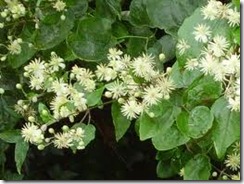Clematis vines make an impact with their colorful flowers and fruits decorating the landscape. The vines are hardy in U.S. Department of Agriculture hardiness zones 4 to 10, with hybrids hardy to zone 4 and sweet autumn clematis hardy to zone 5. Clematis are low maintenance vines, needing only occasional pruning and fertilizing to stay vigorous and healthy.
- Difficulty:
- Moderately Easy
Instructions
things you’ll need:
- Soil testing kit
- Tiller
- Shovel (optional)
- Compost
- Rotted manure (optional)
- Bucket
- Spade
- Garden hose
- Hand pruning shears
- Wood chips or compost
- Irrigation system
- Fertilizer (15-5-5, 21-7-14 or 32-8-16)
- Select a sunny, open site protected from gusty winds, with a soil pH as close to neutral, which is 7.0, as possible. Clematis needs well-drained, moist, rich soil.
- Buy a soil testing kit at garden center or nursery to test the soil’s pH and phosphorous level. Your extension service office has kits for testing soil samples for a fee.
- Loosen soil with a tiller or shovel in an area 3 feet wide, to a depth of 2 feet. Mix compost or rotted manure into the soil well.
- Soak the roots of bare root clematis plants in a bucket filled with water for an hour before you plant the vine.
- Dig a hole wide enough for the root ball and deep enough for the crown — where the roots meet the stem of the vine — to sit 1 to 2 inches below the surface.
- Set the clematis vine in the hole. Plant clematis 2 feet away from living supports, such as shrubs or trees, and 1 foot away from trellises and fences.
- Fill in the hole around the vine with the soil dug out of the whole. Tamp down soil lightly. Water to get rid of air pockets and settle the soil. Cut the clematis back to 1 foot above the ground.
- Spread a 2- to 3-inch layer of mulch, such as wood chips or compost, around the base of the plant. In late spring, replace the mulch with a fresh 2-inch layer.
- Water clematis vines deeply at least once a week. They should get 1 inch of water per week from handwatering, irrigation system or natural rainfall.
- Apply 1/2 lb. of 15-5-5 fertilizer to the 50 square feet surrounding the vine. Fertilize with a 21-7-14 or 32-8-16 fertilizer once a year.
- Prune early-flowering clematis as soon as the flowers fade each year, removing only the stems that bloomed with flowers. In February or March, prune large-flowered hybrid and late-flowering clematis vines. Remove weak and dead stems and cut back the rest of the stems to the first healthy, green, plump buds on large-flowered vines. Cut late-flowering varieties back to 2 to 3 feet above the ground.
Tips & Warnings
-
Give bicolor, blue and red large-flowered hybrids partial shade or plant on the east side of a structure to keep the flowers from fading.
-
Transplant clematis vines from late fall to early spring.
-
Use plastic or galvanized coated wire, latticework, trellises or any wire-like structure to support clematis vines.
-
Do not plant clematis in sites with standing water.
-
Avoid adding lime to the soil unless it has a high level of acidity.


Deprecated: strpos(): Passing null to parameter #1 ($haystack) of type string is deprecated in /home/agriviek8Qv/agriviet.net/public_html/wp-includes/comment-template.php on line 2522